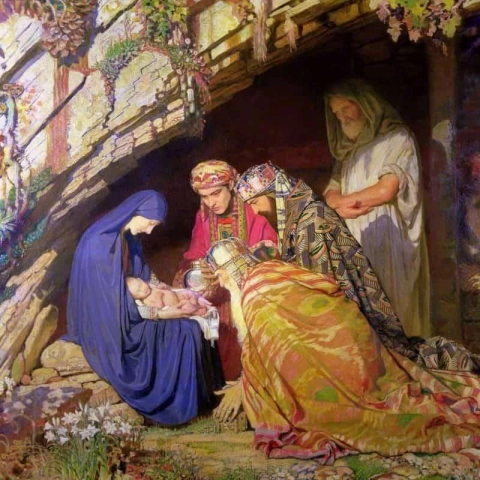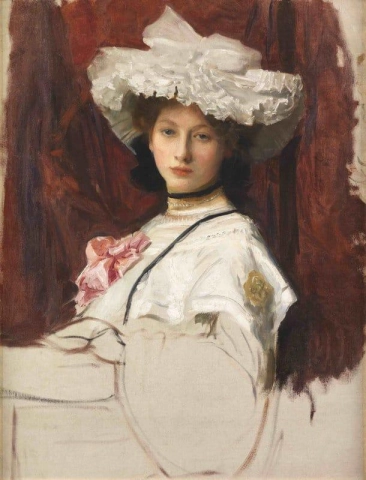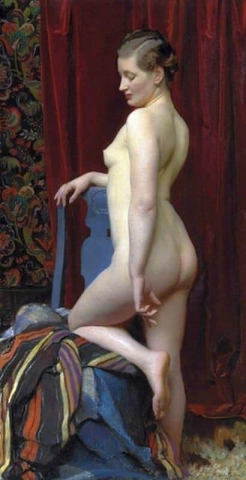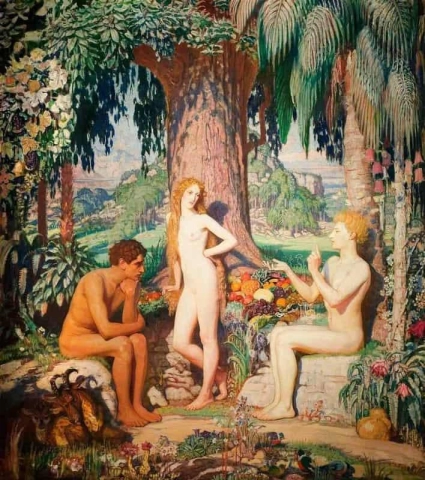

Hand painted reproductions of George Spencer Watson
George Spencer Watson: British Portraiture and the Elegance of Realism
Early Life and Artistic Beginnings
George Spencer Watson was born on March 8, 1869, in London, England. He showed a natural talent for art from an early age, which led him to study at the Royal Academy Schools in London, where he refined his skills in portraiture and figurative painting. His education at the Academy instilled in him a deep appreciation for classical techniques, and his early works exhibit a mastery of realism and detailed observation that would define his career.
Signature Style and Notable Works
Spencer Watson is celebrated for his refined and sophisticated portraits, often of high-society figures, as well as his evocative depictions of his family and rural life. His notable works include “The Orange Dress” and “The Head of a Girl”, which showcase his skill in capturing the character, mood, and elegance of his subjects. Through his refined brushwork and attention to detail, he brought out the individuality of each sitter, setting him apart as a master portraitist in early 20th-century British art.
In addition to his portraits, Spencer Watson also painted landscapes and genre scenes that reflect his fascination with the beauty of nature and everyday life. His works blend classical composition with a subtle emotional depth, imbuing them with a timeless appeal.
Technique and Artistic Style
Spencer Watson’s technique is characterized by his meticulous approach to detail, his use of soft, natural lighting, and a restrained color palette that enhances the realism of his subjects. He worked primarily in oils, using fine brushstrokes to create smooth, lifelike textures, particularly in his treatment of skin, fabrics, and natural elements. His compositions often center on his subjects with an elegant simplicity, drawing the viewer’s focus to the sitter’s expression and presence.
A painter grounded in Realism yet influenced by Impressionist lighting techniques, Watson’s style is distinguished by a delicate balance between technical precision and an impression of warmth and intimacy. This combination lends his portraits a certain grace and charm, capturing both the physical likeness and the spirit of his subjects.
Legacy and Enduring Influence
George Spencer Watson’s contribution to British portraiture and Realism remains highly regarded. His works are preserved in major collections, including the National Portrait Gallery in London, where they continue to be celebrated for their elegance and classic beauty. His legacy endures in the realm of portraiture, influencing artists who seek to blend realism with sensitivity and grace.
Where to Buy Reproductions of George Spencer Watson’s Work
POD offers carefully crafted reproductions of George Spencer Watson’s works, allowing art lovers to bring his elegant and lifelike portraits into their own spaces. With these reproductions, admirers can enjoy the timeless beauty of Watson’s refined style and his dedication to capturing the essence of his subjects.
Imagine owning an original work of art by George Spencer Watson, one of the greatest artists in history. At POD we offer you the opportunity to make this dream come true. We reproduce George Spencer Watson's works down to the smallest detail, so you can enjoy them in your own home.
Our reproductions are made by experienced artists who use the best materials and techniques. We are dedicated to providing you with the highest quality works of art, which will bring joy and inspiration to your family for generations.





















































